You’ve Got Your Braces Now What?
You have already taken the steps to a perfect smile, and you have begun your Orthodontic treatment, but what happens now you have your new braces? Orthodontic treatment times vary from individual to individual and it’s important that you do your part to make sure you’re happy and comfortable during treatment.
The Journey To Comfort
It’s no secret that orthodontic treatment causes some temporary discomfort to your mouth, teeth and gums for a day or two after braces & retainers are fitted or adjusted. But the good news is that you can manage the discomfort by understanding what is happening to your teeth and following some of the simple steps below. If you’re experiencing continuous irritation, or if your level of discomfort is affecting your eating or your speech, contact your practice as soon as you can.
Whats happening to my teeth?
Having any orthodontic treatment encourages your teeth to move, teeth that have been in your head your entire life. When your start your treatment or have your braces adjusted, a gentle force is applied to your tooth. This force causes ligaments around the tooth’s root to stretch or shrink, while they are being moved into their new position and eventually the stretched ligaments form new bone holding the tooth in place. Your level of discomfort will depend on whether you are being treated with removable braces or a fixed brace.
Foods
It’s advisable to consume soft foods when your braces have been fitted or adjusted. Here are our tips on what to eat when your discomfort is high:
- Eat soft foods like rice, pasta, soup & bananas. Some patients even consume baby food when they have had their braces adjusted.
- Avoid foods like popcorn, fizzy drinks, nuts, crusty bread, lemons, crisps, sweets, chocolate, toffee, gum, biscuits, cake and corn on the cob.
- Definitely avoid crunching on ice, nail biting and chewing pens.
- You may be able to eat thinly chopped carrot sticks and sliced apple and pear
You can also consume smoothies and juices when levels of discomfort are high. Juices and smoothies are high in nutrients, and not too damaging to your teeth and new braces (when made freshly at home, if you are buying pre-made juices ensure you check the label for sugar content).
Following these steps will ensure your discomfort level is kept at a minimum when your brace has been adjusted.

Removable braces
The discomfort experienced when you receive your new tray has been described as wearing a pair of shoes that are slightly too small around your teeth! The benefit of a removable brace like Invisalign is that your teeth are moved in micro steps, meaning the force at which they are moved is gentle and fast, keeping discomfort to a minimum. You will also be able to remove your brace when eating and drinking which means discomfort will not affect eating when you receive your new trays.
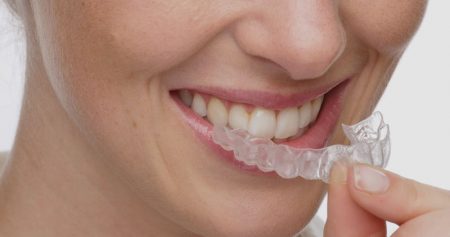
Fixed braces
When your fixed brace is first fitted, you may experience irritation of the lips or cheeks. Again, this is a very normal symptom of orthodontic treatment and can be treated easily with non-medicinal relief wax provided in your care packet. Simply roll the wax into a small pea-sized ball and press gently against the area of the brace that is irritating your mouth. Make sure you avoid hot drinks while using relief wax to ensure it doesn’t melt away from your brace. When your brace is adjusted you may find the discomfort makes it difficult for you to eat solid food.
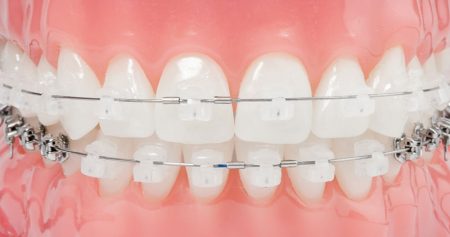
What can happen to your new brace
Occasionally there can be some complications with your braces. You should always contact your practice if any parts of your braces come loose or away from your teeth.
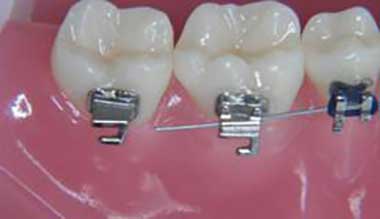

If your wire dislodges you should or your bracket breaks you should contact your surgery ASAP.
Keeping your brace & teeth clean
We all know how important it is to keep your teeth clean. The aim of the game is to straighten your teeth, gain beautiful smile, maintain healthy teeth and gums while avoiding decay, gum disease and decalcification. When you have a brace, bacteria have more places to hide, meaning you have to be extra vigilant and take great care of your oral hygiene. Again, the way to take clean your teeth and braces depends on the treatment you are having.
Fixed braces
1. Toothbrushing
When you wear a fixed brace you must brush your teeth at least four times a day, so morning and evening as you would usually do and after every meal. You’ll also be provided with an interspace brush (a brush with a tip at a right angle and smaller bristles) which you’ll need to use after your regular toothbrush to clean around the wires and brackets. We recommend our patients use an electric toothbrush, our favourites are Philips sonic care & Colgate 350.
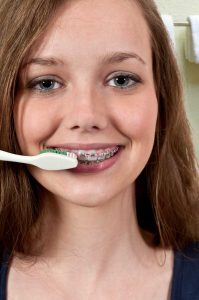
Top tip: carry a bag containing a travel toothbrush, interspace brush, toothpaste, mirror, floss and mouthwash with you so you’re able to clean your teeth as often as you need too.
2. Disclosing Tablets
Use disclosing tablets once a week to highlight areas where plaque is building up, and highlight where you need to concentrate on when cleaning your teeth and brace.
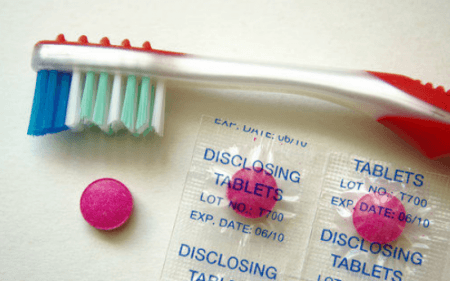
3. Floss
When you floss your teeth regularly you are maintaining your gum line, keeping it healthy. You will need to floss around the wire of your fixed brace as well as in between your teeth as usual.
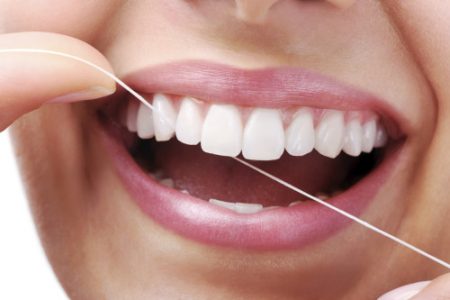
Removable Braces
As with a fixed brace, you will need to brush your teeth after every meal. You’ll also need to clean your Invisalign braces by brushing them in lukewarm water. You can also use special cleaning tablets such as Invisalign cleaning crystals or retainer brite tablets. You will need to take care of your oral hygiene as you usually would, so brush, floss & use mouthwash as usual! The main benefits of Invisalign are that your life does not have to change too much to accommodate your treatment.
Protect your smile
If you’re worried about how your new brace will impact you playing your favourite sports, don’t worry! A fixed brace and a contact sport equal a recipe for disaster unless you are prepared. Luckily, we offer three varieties of sports guard to ensure you continue to love playing sport with your new brace!

- Customer made sports guards for high impact sports (hockey, rugby, boxing)
- Opraguard sports guard for medium impact sports (football, cricket, hockey)
- Totalguard for light impact sports
Request a callback or contact us for a sports guard/ cleaning kit or any advice today to make you smile journey a success!
